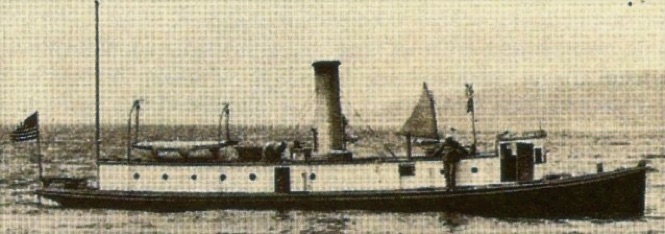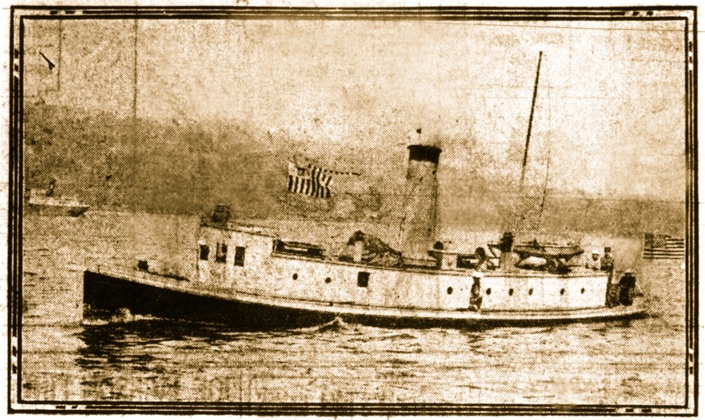Scout
I believe this wreck to be Scout #1

Scout
I believe this wreck to be Scout #1


Scout
US Navy presence on Puget Sound began in 1841 with the arrival of Lt. Charles Wilkes’s US Exploring Expedition fleet of sailing ships, but it wasn’t until 1898 that the first steam-powered patrol boat was built and operated on the sound’s inland waters.
Images of America, Patrol and Rescue Boats on Puget Sound.
Two boats, both steam-driven torpedo boats, were the first patrol boats constructed and routinely used in the Northwest. The USS Rowan (1898-Torpedo Boat # 8) and the USS Goldsborough (1899-Torpedo Boat # 20).


Most other patrol boats on the Puget Sound before and during WWI were assigned to the US Revenue Cutter Service (in 1915 the USRCS became the US Coast Guard). These vessels were not built as military ships, but instead acquired tug and fishing boats refitted for military use.
The use of revenue cutters in the Puget Sound was intrinsic to the rapidly growing territories and maritime business. The government felt that the need for customs revenue collection was a top priority at the time. The first customs activities were centered in Astoria, Oregon, and then shortly thereafter in Olympia, Washington in 1851 at the Puget Sound Collection District. That office was moved two years later to the largest maritime port on the Sound, Port Townsend, Washington.
The biggest problem facing the Collector of Customs was smuggling (goods), using our vast amounts of inlets, rivers, and coves. The large loss of revenue to the US was the sole reason for sending revenue cutters to the Northwest. In addition, these small vessels could be used to help other ships in distress and aid government officials to make their various rounds.
The purchase of Alaska in 1868 greatly increased the revenue cutter numbers in the Pacific Northwest. Some of the most famous cutters like the Bear, Corwin, and Wolcott sailed to the Bering Sea and Arctic Ocean with Port Townsend still being the main port of operations for Alaska and the rest of the established territories. Seattle although, soon became increasingly more predominant to shipping interests.


One story that the ever popular Scout received accolades for was one of pirates and plunder.
A gang of local pirates headed by the calamitous Ernest Gomell and HG Schmidt had been keeping the local residents of the San Juan Islands in constant predacious turmoil. They not only preyed on craft at sea, like the seizure of J. Sutherlands commercial vessel, but partook in raids on the islander's sheep and cattle herds. The pirates were finally brought to justice by Commander Ben Lichtenberg and his crew aboard the Scout. On July 15, 1913 the two men were sentenced to 8 - 25 years.
On May 5, 1914 it was announced that after 18 years of service, the gallant US Revenue Cutter Scout would be slated for discard; she would be replaced by the 61’ Patrol (renamed Scout (2)) the same year. Shortly thereafter the Scout (1) was sold on April 2, 1915.
Scout (2) was placed in the newly formed “Coast Guard” service on March 8, 1915 as the gasoline powered USCGC Scout.

In April of 1917, soon after the US entered into WWI, the Scout (2) was taken over by the Navy and placed in service as USS Scout.
In 1919, Scout (2) was returned to the Treasury Department and rebuilt.
In 1923, the Scout (2)( ex-Patrol), was renamed AB-11. (It is believed AB stands for Anchorage and Boarding). There were 68 AB boats serving the Coast Guard.
Eventually in 1930 the Scout (2) was “discarded” and thereby sold.
The wreck in Lake Washington has not been positively identified by divers as either Scout 1 or 2 because of their very similar characteristics. Upon very close examination by myself I strongly believe it to be Scout number one. I state my theory in the video below, and implore you to decide.
USS Rowan TB No. 8
USS Goldsborough TB No. 20
Guard (1)
Scout (1)


-Home